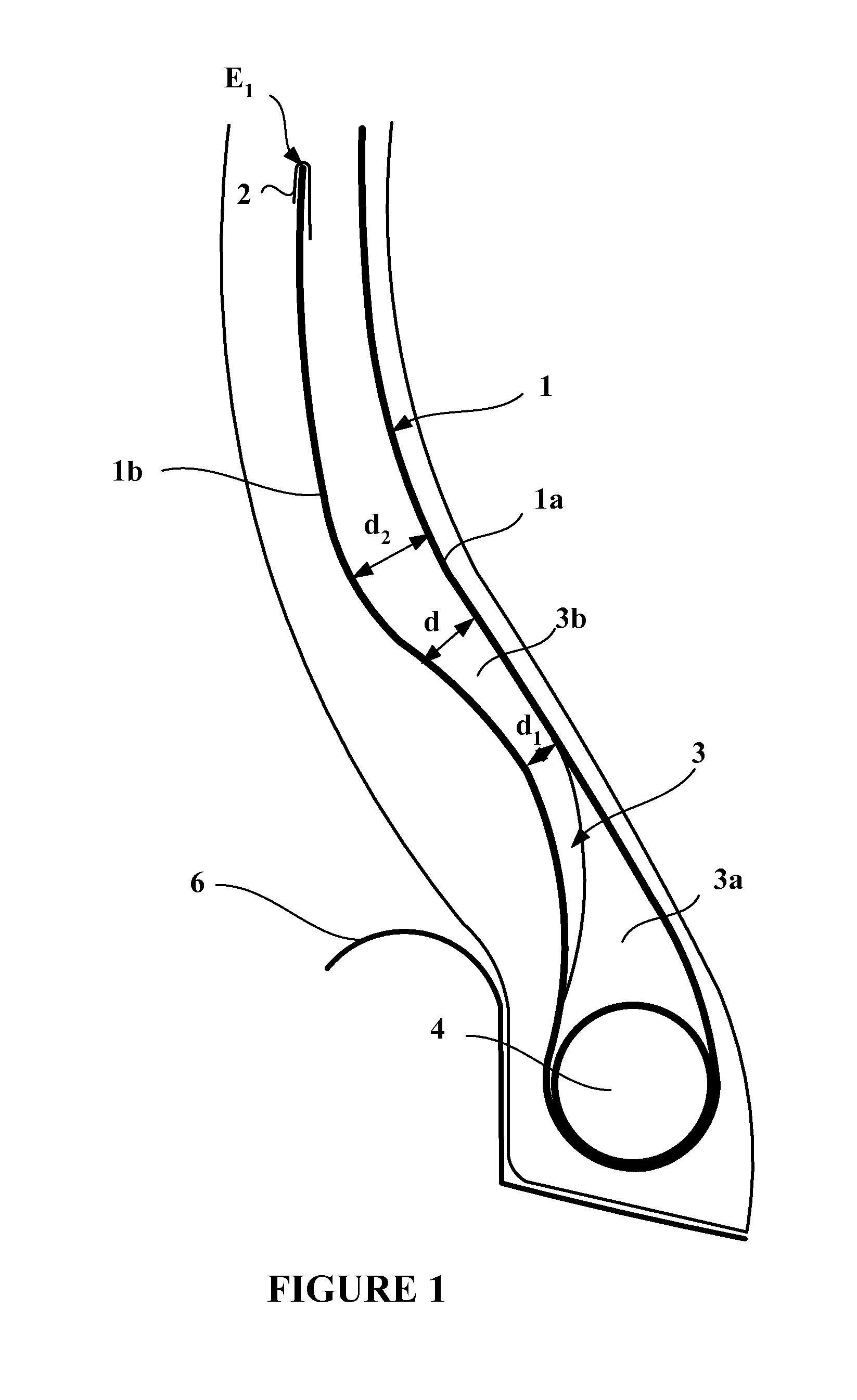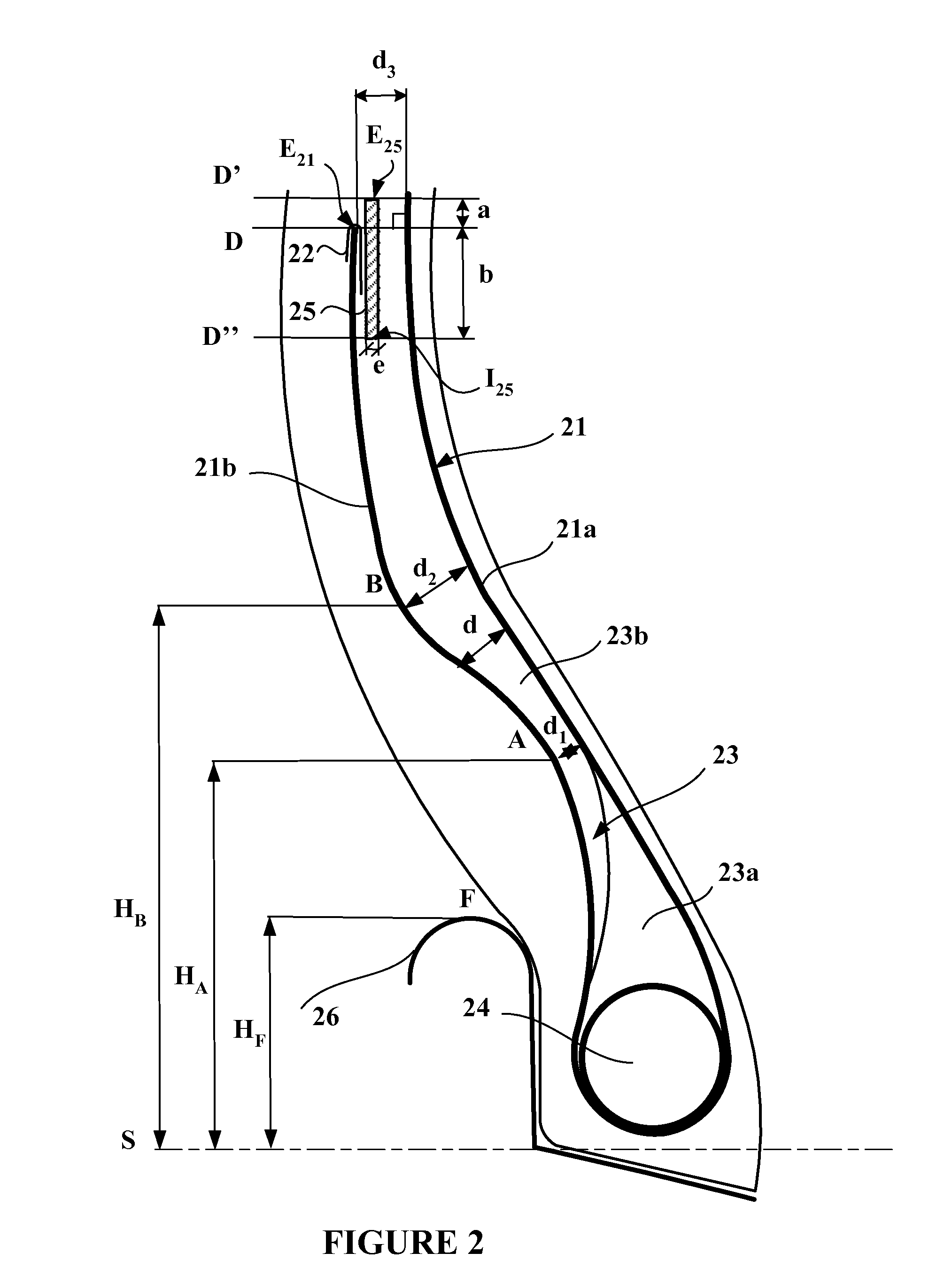Bead of a tire for a heavy vehicle of construction plant type
a construction plant type, tire technology, applied in the field of radial tires, can solve the problems of reducing the endurance of the bead and the life of the tire, reducing the stress and deformation of the polymer coating, and reducing the cracking rate. , the effect of optimizing the tension
- Summary
- Abstract
- Description
- Claims
- Application Information
AI Technical Summary
Benefits of technology
Problems solved by technology
Method used
Image
Examples
Embodiment Construction
[0065]In order to make them easier to understand, FIGS. 1 and 2 are not drawn to scale.
[0066]FIG. 1 depicts a bead of a tire for a heavy vehicle of construction plant type of the prior art, comprising:
[0067]a carcass reinforcement, comprising a single carcass reinforcement layer 1 made up of metallic reinforcing elements, with a main part 1a wrapped, from the inside towards the outside of the tire, around a bead wire 4 to form a turn-up 1b,
[0068]the distance d between the turn-up 1b and the main part 1a decreasing continuously, radially towards the outside, from the bead wire 4, as far as a minimum distance d1, then increasing continuously as far as a maximum distance d2,
[0069]an edging element 2 covering the end E1 of the turn-up 1b, on its two respectively axially inner and axially outer, faces, and consisting of a polymer edging material of the same chemical composition as the polymer coating material,
[0070]a filling element 3 extending the bead wire 4 radially outwards and form...
PUM
 Login to View More
Login to View More Abstract
Description
Claims
Application Information
 Login to View More
Login to View More - R&D
- Intellectual Property
- Life Sciences
- Materials
- Tech Scout
- Unparalleled Data Quality
- Higher Quality Content
- 60% Fewer Hallucinations
Browse by: Latest US Patents, China's latest patents, Technical Efficacy Thesaurus, Application Domain, Technology Topic, Popular Technical Reports.
© 2025 PatSnap. All rights reserved.Legal|Privacy policy|Modern Slavery Act Transparency Statement|Sitemap|About US| Contact US: help@patsnap.com



